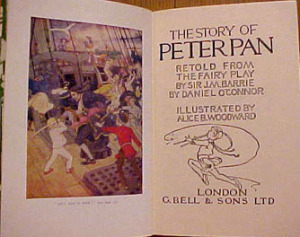Abraham Lincoln & Lewis Carroll: A Curious Connection
 Monday, February 16, 2015 at 02:08PM
Monday, February 16, 2015 at 02:08PM  Abraham Lincoln photographed by Alexander HesslerIn honor of President’s Day, it’s a good time to observe the curious relationship
Abraham Lincoln photographed by Alexander HesslerIn honor of President’s Day, it’s a good time to observe the curious relationship Lewis Carroll photographed by Reijlander between Abraham Lincoln and Lewis Carroll. Although the two men never met, I would like to mention some interesting connections between these two famous figures.
Lewis Carroll photographed by Reijlander between Abraham Lincoln and Lewis Carroll. Although the two men never met, I would like to mention some interesting connections between these two famous figures.
The popular English dramatist, Tom Taylor, was the person who introduced Lewis Carroll to the chief cartoonist of Punch magazine, John Tenniel. Taylor contributed humorous pieces to Punch, which was an significant topical magazine popular on both sides of the Atlantic. Famous for its cartoons, Punch was the nineteenth-century equivalent of The New Yorker. As an avid theatergoer, Carroll knew Taylor from attending the opening of many of his plays. Once Carroll even wrote Taylor correcting him on some of math in his play The Ticket-of-Leave Man. Taylor warned Carroll that Alice’s Adventures Under-Ground, the title for the manuscript that Carroll both wrote and illustrated for Alice Liddell, sounded too much like a book about mining.
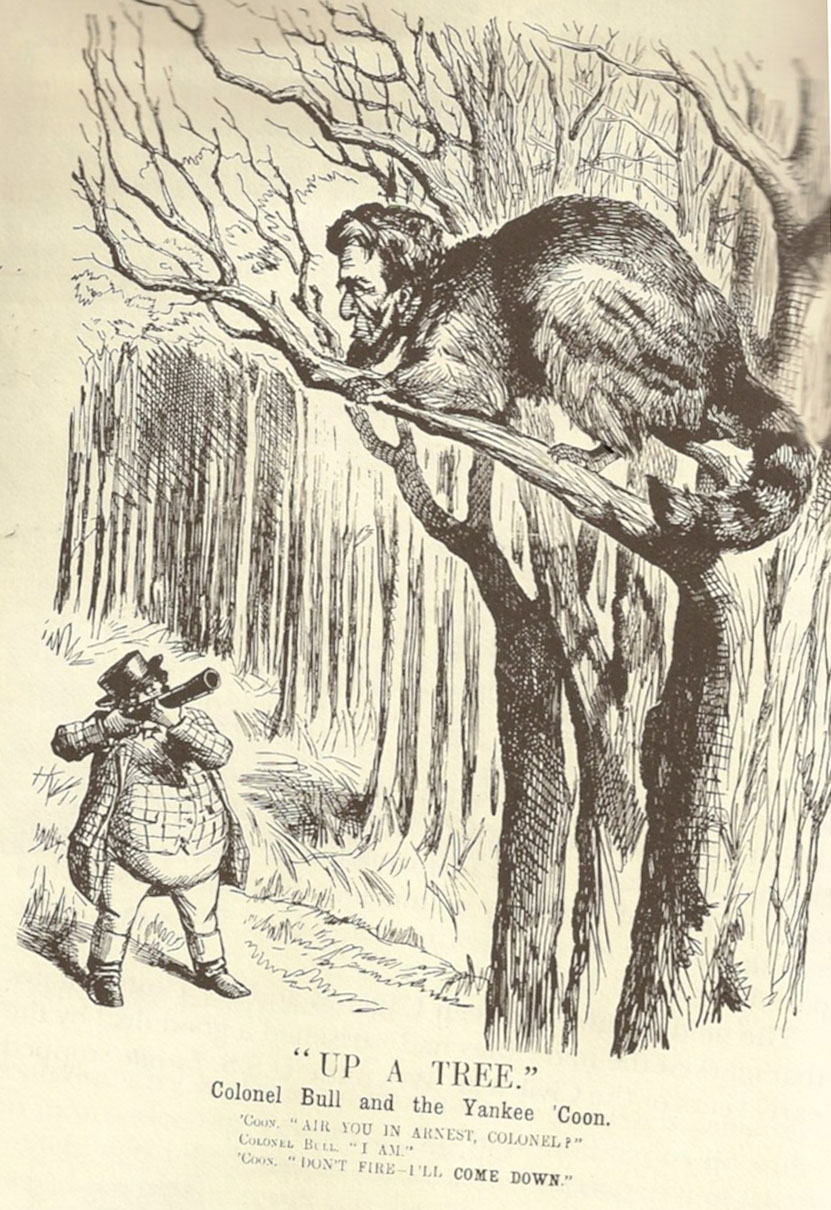 Tenniel's political carton depicting Lincoln in treeCarroll admired Tenniel’s drawings and asked him to illustrate his
Tenniel's political carton depicting Lincoln in treeCarroll admired Tenniel’s drawings and asked him to illustrate his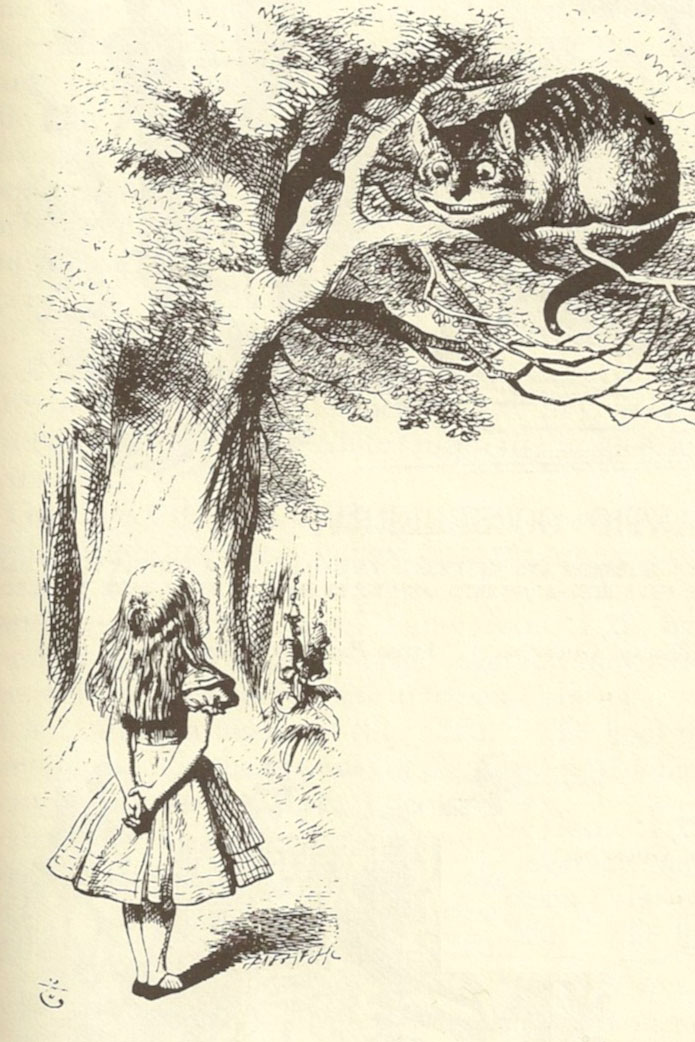 Tenniel's illustration of Cheshire Cat for Wonderland forthcoming Alice’s Adventures in Wonderland. Tenniel accepted the challenge; but being a busy, professional artist he recycled some of the images that he had already created for Punch magazine into his illustrations for Wonderland. The most famous example is Alice looking at the Cheshire Cat sitting in a tree. This is a reworking of Tenniel’s 1862 Punch cartoon “ ‘UP A TREE.’ Col. Bull and the Yankee ‘Coon” that features Abraham Lincoln as a raccoon. In the illustration that appears in Wonderland, Lincoln as the raccoon is transformed into the Cheshire Cat.
Tenniel's illustration of Cheshire Cat for Wonderland forthcoming Alice’s Adventures in Wonderland. Tenniel accepted the challenge; but being a busy, professional artist he recycled some of the images that he had already created for Punch magazine into his illustrations for Wonderland. The most famous example is Alice looking at the Cheshire Cat sitting in a tree. This is a reworking of Tenniel’s 1862 Punch cartoon “ ‘UP A TREE.’ Col. Bull and the Yankee ‘Coon” that features Abraham Lincoln as a raccoon. In the illustration that appears in Wonderland, Lincoln as the raccoon is transformed into the Cheshire Cat.
In the Abraham Lincoln Presidential Museum in Springfield, Illinois, there is a long hall, called The Whispering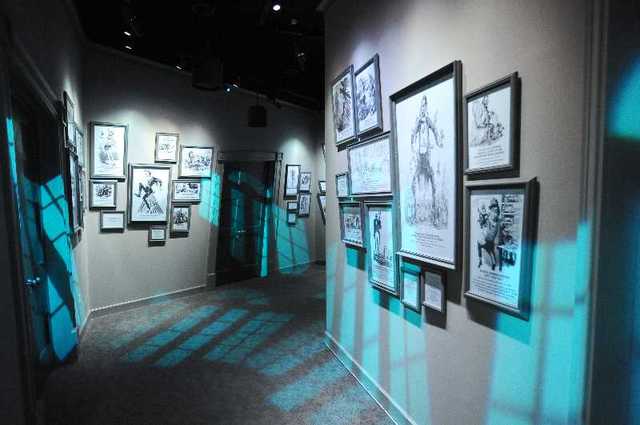 Whispering Gallery in the Lincoln Presidential Museum Gallery, filled with a display of political cartoons criticizing Lincoln prior to his second inauguration. Some of those cartoons were featured there are by John Tenniel who frequently satirized Lincoln in Punch. (Punch actually coined the term ‘cartoon.’)
Whispering Gallery in the Lincoln Presidential Museum Gallery, filled with a display of political cartoons criticizing Lincoln prior to his second inauguration. Some of those cartoons were featured there are by John Tenniel who frequently satirized Lincoln in Punch. (Punch actually coined the term ‘cartoon.’)
Taylor wrote the play Our American Cousin (1858). That comic melodrama was being performed at Ford Theater when President Lincoln and his wife Mary were in the audience April 14, 1865. John Wilkes Booth, a lead actor in the theater’s production of Taylor’s play, assassinated Lincoln during that performance.
Alice’s Adventures in Wonderland was published in the same year. In 1865, Carroll also wrote American Telegrams, which was an academic satire against Dean Henry George Liddell, the father of Alice Liddell. In it, Carroll parodied telegrams produced during the U.S. Civil War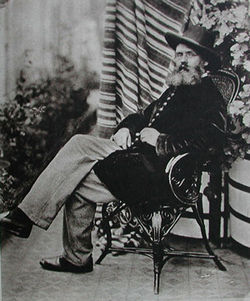 Tom Taylor photographed by Lewis Carroll.
Tom Taylor photographed by Lewis Carroll.
Carroll photographed Tom Taylor in London wearing an U.S. Civil War uniform. While Lincoln was the most photographed man of his age, Carroll is considered one of the best amateur photographers, particularly of children, during the same time period. Lincoln was in front of the camera while Carroll was behind the camera.
Although the two men lived far apart from each other, the lives of Lincoln and Carroll intertwined in interesting ways.
Sources:
Cohen, Morton N. Lewis Carroll: A Biography. New York: Knopf, 1995.
Hancher, Michael. The Tenniel Illustrations to the “Alice” Books. Columbus, Ohio: Ohio State University Press, 1985. (Ohio State Univ. Press has the entire book available online.)
Jones, Jo Elwyn and J. Francis Gladstone. The Alice Companion: A Guide to Lewis Carroll’s Alice Books. New York: New York University Press, 1998.





